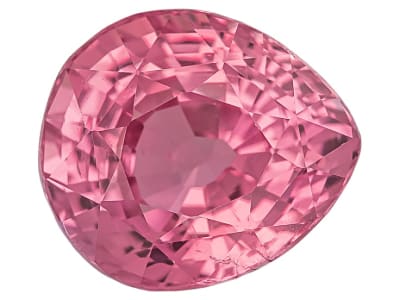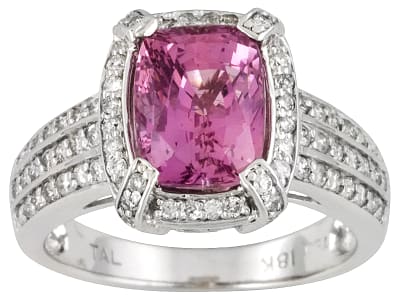While sapphires have mesmerized gem and jewelry connoisseurs since the dawn of time, one fancy sapphire variety has a distinct allure and prestige all its own: padparadscha sapphire. Padparadscha sapphire derives its name from the Sanskrit padma ranga, meaning “lotus color,” for its resemblance to the famed lotus flowers of Sri Lanka, where the gem was originally found. Padparadscha sapphires traditionally must combine elements of pink and orange in one gem to rightly claim their padparadscha title, though the coloration requirements are highly disputed.
General Information
Common Name
Padparadscha Sapphire
Species
Corundum
Transparency
Transparent - Opaque
Dispersion
Strength: Weak Fire Value: 0.018
Refractive Index
1.762-1.770
Tolerance:(+0.009/-0.005)
Tolerance:(+0.009/-0.005)
Birefringence
0.008-0.01
Optic Character
Uniaxial
Optic Sign
Negative
Polariscope Reaction
Doubly Refractive (DR)
Fluorescence
SWUV: Inert
LWUV: Orange:Inert to strong orangy red
LWUV: Orange:Inert to strong orangy red
Pleochroism
Dichroic, strong yellowish orange and colorless
Hardness
9
Streak
White
Specific Gravity
3.950-4.100 Typical:4.000
Toughness
Excellent
Inclusions
This stone has type II clarity and sometimes will have silk, rutile, boehmite or zircon crystals and fingerprint inclusions. Stones can show hexagonal growth and color zoning. Untreated stones will usually have inclusions intact. Heat treated stones will have fracture halos or snowballs around crystal inclusions( untreated stones from magmatic areas might also show these characteristics). Silk will be broken and might show sintered areas especially around the girdle.
Luster
SubAdamantine, Vitreous
Stability
Very Good
Fracture
Conchoidal
Cleavage
None
Chemical Name
aluminum oxide
Chemical Formula
Al2O3
Crystal System
Trigonal
Chemistry Classification
Oxide
Padparadscha Sapphire Colors
-
 Orange
Orange -
 Orange
Orange -
 Orange
Orange -
 Pink
Pink
Countries of Origin
Tanzania, United Republic Of; Russian Federation; Unknown; Malawi; Sri Lanka; China; United States of America; Madagascar; Switzerland; India
Care
Normal Care

